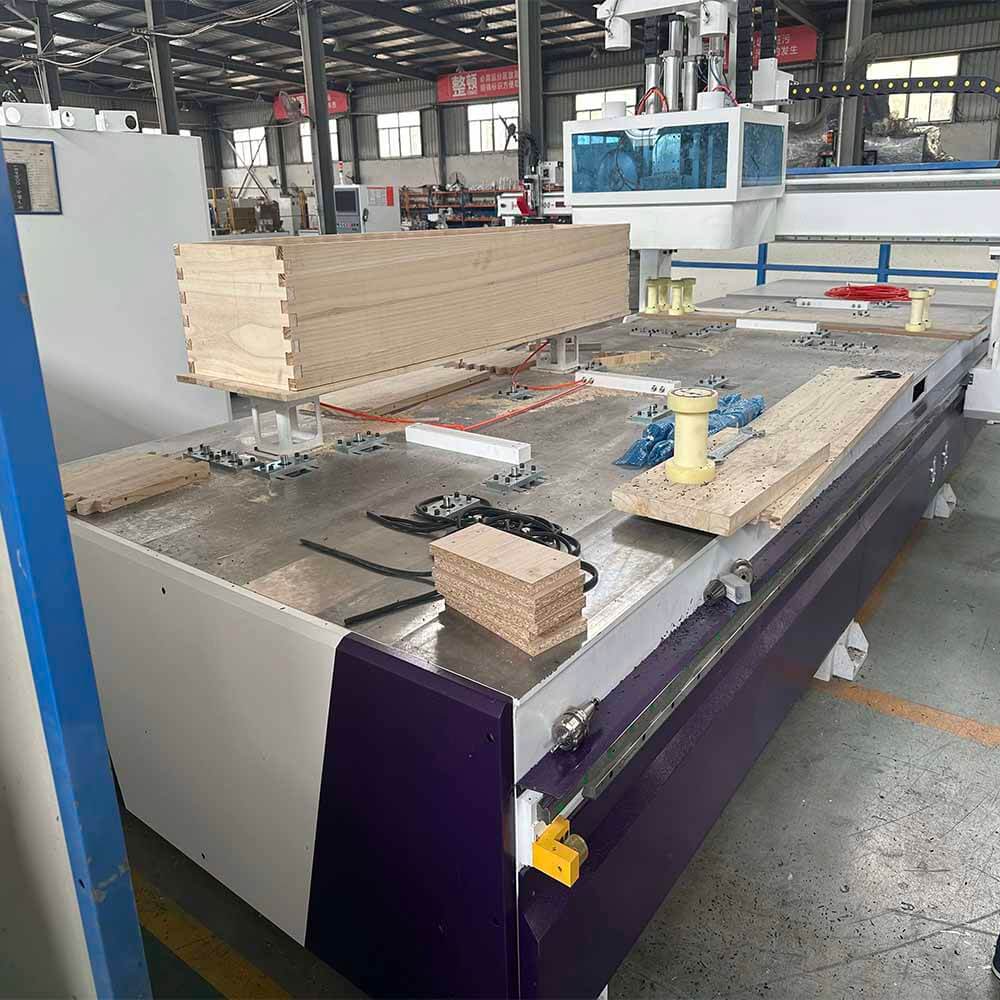
Related Blogs
Explore the world of 5-axis CNC routers! Discover their precision, key features, and applications in woodworking and manufacturing. Get tips for choosing the right machine for your projects!
Understanding these differences is crucial for making an informed purchasing decision. In this article, we’ll delve into the unique features and benefits of each type of machine, providing you with a clear perspective on which might be the right fit for your needs.
A 4-axis CNC router typically involves the X, Y, Z axes and an A-axis that rotates ±120° around the X-axis. This configuration allows for milling on three sides of a workpiece in a single setup. For instance, if you’re machining a cube, the 4-axis router can easily mill the left, top, and right sides without needing to reposition the piece.
A 5-axis CNC router adds two additional rotational axes—A and C. The A-axis rotates ±120° around the X-axis, while the C-axis can rotate a full 360° around the Z-axis. This capability allows the machine to cut or mill on any of the five sides of an object, enabling complex shapes to be processed in a single setup.
When it comes to milling capabilities, a 4-axis router struggles with complex cavities and detailed designs that require access to all sides. A 5-axis CNC router, however, can efficiently handle intricate shapes and profiles without the need for re-clamping.
When it comes to milling capabilities, a 4-axis router struggles with complex cavities and detailed designs that require access to all sides. A 5-axis CNC router, however, can efficiently handle intricate shapes and profiles without the need for re-clamping.
Productivity is significantly enhanced with a 5-axis CNC router. It can complete milling on five sides in a single work cycle using one program, whereas a 4-axis machine may require two separate programs and setups to achieve the same results.
A 5-axis CNC router can produce higher quality finishes since all machining is done in one setup. This reduces the likelihood of errors that can occur when a workpiece is repositioned multiple times.
Lastly, the precision of a 5-axis router is generally superior. Since it can complete all machining processes in one go, the chances of misalignment are minimized, leading to better overall accuracy.
In summary, when weighing the benefits of a 4-axis vs. a 5-axis CNC router, the latter emerges as the clear winner for complex projects that require flexibility, efficiency, and precision. While a 4-axis machine may suffice for simpler tasks, a 5-axis CNC router opens up a world of possibilities for intricate designs and higher-quality finishes. Whether you’re in aerospace, automotive, or creative industries, investing in a 5-axis CNC router could significantly enhance your production capabilities and overall output.
By understanding these differences, you’ll be better equipped to choose the right machine for your specific manufacturing needs.
Explore the world of 5-axis CNC routers! Discover their precision, key features, and applications in woodworking and manufacturing. Get tips for choosing the right machine for your projects!
Send us your request for CNC machines and get an official price within 10 minutes!